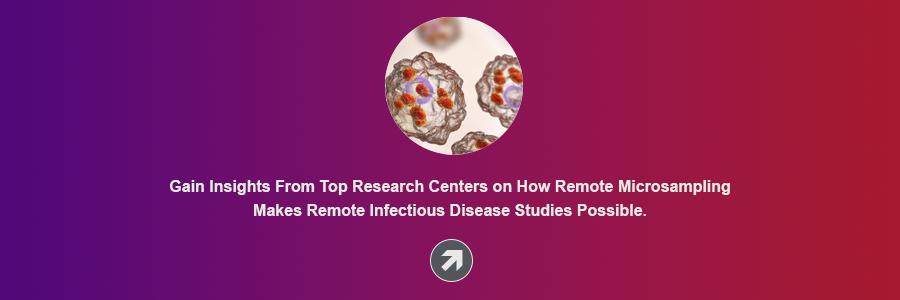Share this
what the coronavirus means for contract research organizations?
by Neoteryx Microsampling on Mar 23, 2020 7:00:00 AM

China has become the most popular region for clinical trial research over the last few years. A recent case study showed clinical trials had increased by 451% between years 2010 and 2017. This increasing investment by large companies like BeiGene, Ltd. is a result of the continuing effort by Chinese regulators to improve healthcare facilities to compete on a global scope.
As a result, China has become the go-to place for early-stage US-based biotech companies looking for help in testing, designing, and manufacturing potential drugs.
However, the recent epidemic has disrupted ongoing clinical trials. With tens of thousands coronavirus infections (COVID-19) and more than 1000 death, China’s government has imposed travel bans to prevent further spread.
Impact of the Pandemic on Clinical Trials and Studies
Researchers have since been working round-the-clock to find a cure for the new virus; this may not happen soon. The predicament is affecting other areas of clinical research, particularly those run by CROs in two ways:
- The Chinese government’s efforts to prevent the spread and,
- The fear of getting sick has deterred movement
Initially, the impact was minor as the travel bans, and workplace closures coincided with China’s Lunar New Year celebrations. However, CROs are worried that the restrictions may last longer, disrupting ongoing experiments and drug development projects as most of the CROs are located in Wuhan, where the outbreak is said to have started. Also, since some people don't show sick symptoms, it makes it even more difficult to detect the disease.
There’s also the fact that hospitals are currently not focusing on clinical trials; most of them are treating infected patients. All these factors have led to delays in the launch of new studies, with some contract research organizations unable to send staff out to the fields to monitor trial sites. Since some experiments are more sensitive than others, CROs may end up being a few weeks behind schedule.
Also, some experiments may be put on hold. For example, clinical trials testing a drug on cell cultures or animals are nearly impossible if the drug has not been made. What’s more, experiments that need enough staff to care for research animals have come to a halt rendering months to waste. Some clinical trials affected include:
- Development of Novartis medicine; a drug is said to treat a rare blood disorder
- Medication for treating spinal arthritis from Taslay Pharmaceutical Group
- A cancer drug developed by BeiGene Ltd
What Technologies Can CROs Leverage to Minimize the Disruption?
Contract Research Organizations can leverage on two technologies to minimize disruption and facilitate ongoing clinical trials:
- Making Virtual trials
- Remote sampling
Virtual Trials
Virtual experiments will reduce the burden of making study visits. This is because the companies will use web services and telemonitoring to perform most or all the research. Participants are recruited online, screened for eligibility through web-based questionnaires, and electronic diaries created. The proliferation of smartphones and remote health monitoring devices like the Mitra makes virtual trials an even more promising strategy.
Remote sampling
The invention of sampling techniques like microsampling presents alternatives CROs can leverage to help carry on with their clinical trials. Also referred to as Volumetric Absorptive Microsampling, the process involves the collection of small (usually 10-20 microliters) and precise volumes of biological fluid for tests or experiments.
The technology was developed to solve the limitations of Dried Blood Spot and has spawned new uses such as remote sampling. Remote sampling is particularly handy for CROs looking to collect samples from participants living in Wuhan as the region is under federal quarantine.
The institutions can garner on VAMS to perform remote patient monitoring. VAMS devices like Mitra, will be particularly useful in influenza type viruses or viral pathogens and research applications as it eliminates phlebotomy for vaccine responses, enables researchers to understand the efficacy of seasonal vaccines for flu among other benefits. Other benefits of remote sampling include:
- Minimal Training: Participants only need one training session, and they are ready to collect the blood samples without supervision. The samples collected are accurate, regardless of the participant’s location
- Accuracy: The Mitra Microsampler makes it easy for participants to self-collect accurate blood samples at home. What’s more, the logistical benefits of working on dried blood are retained
- High Adherence Rate: The main challenge for CROs performing clinical trials at the moment is retaining participants. Many of them are experiencing high dropout rates following the imposed federal quarantine in various cities in China. With remote sampling, participants don’t need to visit healthcare facilities improving CRO’s adherence and retention rate
- No Cold Chain Shipping Costs: Mitra collection kits enable participants to collect and send the sample, which eliminates shipping costs and the intricacies of cold-chain shipping
Click here to know more about the remote sampling device, Mitra.

Share this
- Microsampling (206)
- Research, Remote Research (119)
- Venipuncture Alternative (105)
- Clinical Trials, Clinical Research (83)
- Mitra® Device (73)
- Therapeutic Drug Monitoring, TDM (51)
- Dried Blood Spot, DBS (39)
- Biomonitoring, Health, Wellness (30)
- Infectious Disease, Vaccines, COVID-19 (24)
- Blood Microsampling, Serology (23)
- Omics, Multi-Omics (21)
- Decentralized Clinical Trial (DCT) (20)
- Specimen Collection (18)
- Toxicology, Doping, Drug/Alcohol Monitoring, PEth (17)
- Skin Microsampling, Microbiopsy (14)
- hemaPEN® Device (13)
- Preclinical Research, Animal Studies (12)
- Pharmaceuticals, Drug Development (9)
- Harpera Device (7)
- Industry News, Microsampling News (5)
- Antibodies, MAbs (3)
- Company Press Release, Product Press Release (3)
- Environmental Toxins, Exposures (1)
- July 2025 (1)
- May 2025 (1)
- April 2025 (2)
- December 2024 (2)
- November 2024 (1)
- October 2024 (3)
- September 2024 (1)
- June 2024 (1)
- May 2024 (1)
- April 2024 (4)
- March 2024 (1)
- February 2024 (2)
- January 2024 (4)
- December 2023 (3)
- November 2023 (3)
- October 2023 (3)
- September 2023 (3)
- July 2023 (3)
- June 2023 (2)
- April 2023 (2)
- March 2023 (2)
- February 2023 (2)
- January 2023 (3)
- December 2022 (2)
- November 2022 (3)
- October 2022 (4)
- September 2022 (3)
- August 2022 (5)
- July 2022 (2)
- June 2022 (2)
- May 2022 (4)
- April 2022 (3)
- March 2022 (3)
- February 2022 (4)
- January 2022 (5)
- December 2021 (3)
- November 2021 (5)
- October 2021 (3)
- September 2021 (3)
- August 2021 (4)
- July 2021 (4)
- June 2021 (4)
- May 2021 (4)
- April 2021 (3)
- March 2021 (5)
- February 2021 (4)
- January 2021 (4)
- December 2020 (3)
- November 2020 (5)
- October 2020 (4)
- September 2020 (3)
- August 2020 (3)
- July 2020 (6)
- June 2020 (4)
- May 2020 (4)
- April 2020 (3)
- March 2020 (6)
- February 2020 (3)
- January 2020 (4)
- December 2019 (5)
- November 2019 (4)
- October 2019 (2)
- September 2019 (4)
- August 2019 (4)
- July 2019 (3)
- June 2019 (7)
- May 2019 (6)
- April 2019 (5)
- March 2019 (6)
- February 2019 (5)
- January 2019 (8)
- December 2018 (3)
- November 2018 (4)
- October 2018 (7)
- September 2018 (6)
- August 2018 (5)
- July 2018 (8)
- June 2018 (6)
- May 2018 (5)
- April 2018 (6)
- March 2018 (4)
- February 2018 (6)
- January 2018 (4)
- December 2017 (2)
- November 2017 (3)
- October 2017 (2)
- September 2017 (4)
- August 2017 (2)
- July 2017 (4)
- June 2017 (5)
- May 2017 (6)
- April 2017 (6)
- March 2017 (5)
- February 2017 (4)
- January 2017 (1)
- July 2016 (3)
- May 2016 (1)
- April 2016 (2)


Comments (1)